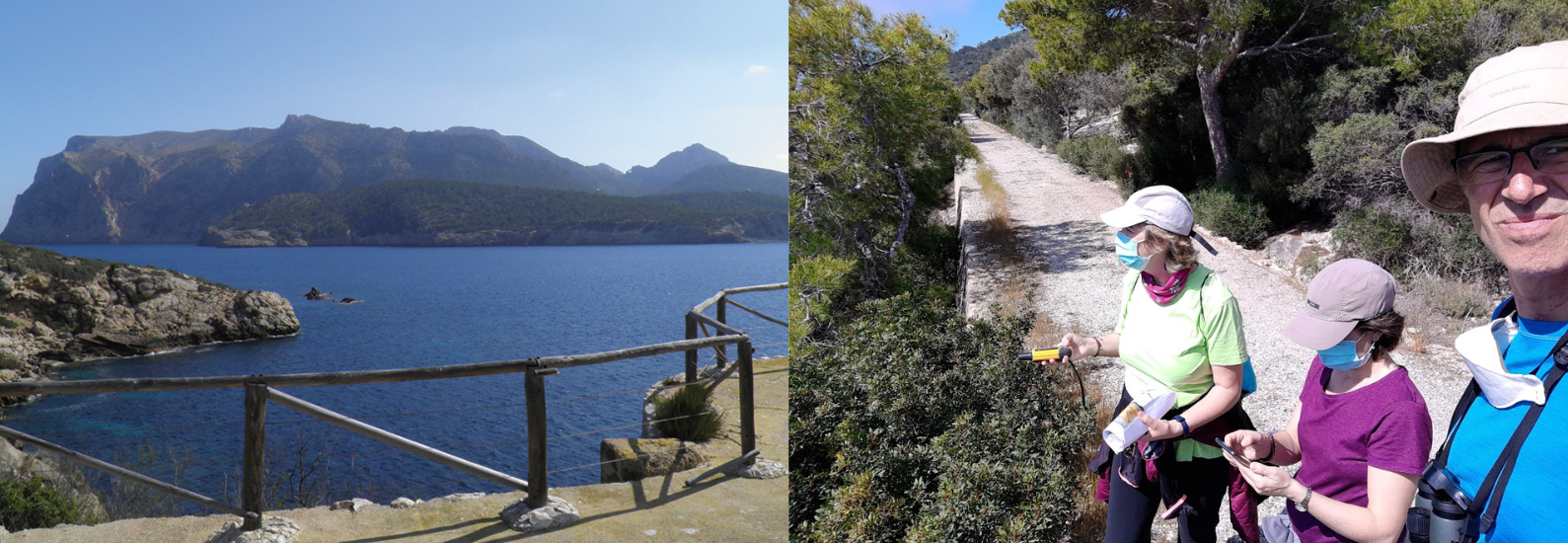An interdisciplinary study prepared by a team of researchers from the Center for Advanced Studies of Blanes (CEAB-CSIC), the Pirinenc Institute of Ecology (IPE-CSIC) and the University of the Balearic Islands has evaluated the dynamics of the vegetation of the last four decades on the island of sa Dragonera, in the north-west of Mallorca. The study was recently published in the journal «Global Change Biology» and was carried out as part of the RESILDRAG project, funded by the BBVA Foundation.
This small ecosystem is inhabited by several endemic species, both plant and animal, and depends on a complex balance that has been altered at various times by the action of man. An example of these disturbances is the extinction of Myotragus balearicus, a species of goat of reduced dimensions, and Hypnomys morpheus, a species of giant dormice. These species had inhabited the island for more than 5 million years, but they quickly disappeared with the arrival of humans.
At the hands of man, these species were replaced by the goat and the rat which, together with overexploitation of the forest, conditioned the dynamics of this ecosystem throughout the following four millennia until they were eradicated. The goats, in the 70s of the last century, and the rats, in 2011. They turned Sa Dragonera into the largest Mediterranean island where rats had been eradicated.
The density of vegetation has increased
This new situation in sa Dragonera, without overexploitation of forests and without the presence of large herbivores (goats) and omnivores (rats) that interfere with ecological interactions, has been analyzed by researchers using satellite images of the vegetation productivity for the period 1984-2021 and historical plant inventories.
Thus, the study has made it possible to check how the state of the vegetation is evolving to denser bushes and pine forests. According to the researchers, this increase in the density of the vegetation may pose a threat to some of the species that inhabit the island, including some endemics and, at the same time, it confirms previous studies that had found unexpected effects as a result of the actions management implemented in recent decades, including the eradication of exotic species such as rats.
The study shows the transitory nature of this small island ecosystem after four millennia of human presence and makes clear the current course towards a vegetation dynamic more controlled by ecological interactions without large herbivores and omnivores, by drought dynamics and by the load capacity of the island.
When explaining vegetation dynamics, the study determines that historical disturbances related to harvesting (mainly synergies between goat farming, controlled forest burning and forest overexploitation) were more relevant than the eradication of rats or the influence of the climate.
 According to the researchers, the stability of the new balance will depend on two factors: firstly, on the adaptation of Mediterranean vegetation communities (from annual plants to shrubs and trees) so that they are resilient to fires, droughts and to strong climate seasonality, including extreme climate events.
According to the researchers, the stability of the new balance will depend on two factors: firstly, on the adaptation of Mediterranean vegetation communities (from annual plants to shrubs and trees) so that they are resilient to fires, droughts and to strong climate seasonality, including extreme climate events.
Conservation actions will be fundamental to increase the resilience of the ecosystem
Second, the researchers emphasize the relevance of conservation actions aimed at preventing both the reintroduction of rats and the occurrence of fires and the control of insect pests affecting shrubs and trees. In this scenario, the study highlights the challenge of anticipating the population dynamics of the most valuable taxa for conservation, such as lizards, birds, invertebrates and endemic plants.
Faced with this situation, the researchers point out that the management of the vegetation in sa Dragonera will have to take into account this transition towards a vegetation that will saturate the physical space of the island where the soil allows it to grow. In this scenario, the biodiversity of open spaces will continue to suffer a significant regression. Without specific management measures, plant communities will be controlled by ecological interactions without large herbivores and omnivores, by drought dynamics and by the carrying capacity of the island. It will be up to the managers to implement actions to reduce the density of trees and shrubs and, consequently, increase the resilience of the ecosystem. Along these lines, an example of a management measure that the authors of the study suggest is the controlled grazing of goats at low densities, cleared of vegetation and controlled fire, as is done in other Mediterranean ecosystems that have evolved with this phenomenon.
Reference article:
Oro, D.; Pueyo, Y.; Bauzà, J.; Errea, M. P. i Arroyo, A. I. (2022). Long transient response of vegetation dynamics after four millennia of anthropogenic impacts in an island ecosystem. Global Change Biology, 28, 6318–6332. https://doi.org/10.1111/gcb.16363


